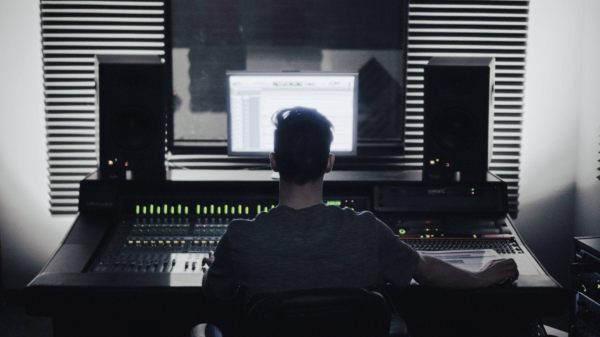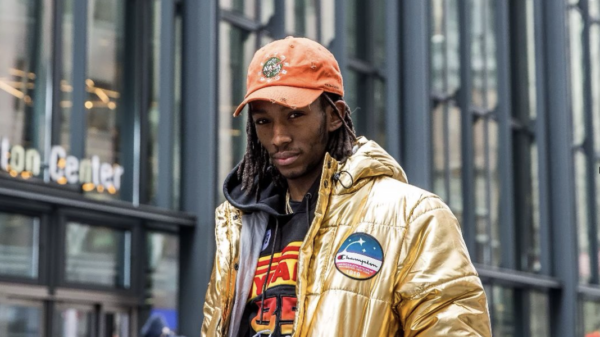Taylor Swift felt the fatigue start to settle in at the end of her 1989 tour. “I think I should take some time off,” the singer-songwriter told NME a few weeks before the 53-show international run concluded in December 2015. “I think people might need a break from me.” At the beginning of that tour in May, 1989 had already been out for seven months. Swift had three number one singles that spent a collective 12 weeks at Number One on the Billboard Hot 100. She was the most famous she had ever been, her pop songs indisputably great. Last year, Swift referred to the 1989 era as an “imperial phase” — what seemed, at the time, like an impossible height of success.
She said this in a rare interview when she was named Time Person of the Year in 2023, nearly one year before the final Eras tour show. Eras spanned almost two years, with 149 shows attended by more than 10 million people across the world. It wasn’t just Swift’s biggest live tour ever. It was the biggest live tour ever, earning more than $2 billion in ticket sales. It focused not on one singular album, but on Swift’s entire catalog of recorded music — which has expanded to include 80 original and re-recorded songs since the tour started in March 2023. This has been her definitive imperial phase. But the term feels insignificant in the aftermath of the Eras tour. Can something so widespread be described as a phase?
“Nothing is permanent,” Swift told Time. “So I’m very careful to be grateful every second that I get to be doing this at this level, because I’ve had it taken away from me before.” The break that she thought people might need from her after 1989 never fully materialized. Swift did disappear for a while, but not entirely on her own terms. She essentially went into hiding following a dispute with Kanye West and Kim Kardashian that manipulated public opinion and weaponized fandom on both sides. “I thought that moment of backlash was going to define me negatively for the rest of my life,” Swift said. Later, she added: “Make no mistake — my career was taken away from me.”
Editor’s picks
After a year of living largely off-grid at a rental home abroad, Swift returned in 2017, but it wasn’t a sheepish comeback. She set the tone with “Look What You Made Me Do,” the lead single from Reputation that broke records across streaming services and YouTube within hours of its release. The album itself spent four weeks at number one. Nearly three million people attended the 53-date Reputation tour, which saw the musician selling out stadiums for the first time. Still, that particular era felt more contained. In hindsight, framing the album as a scathing revenge record did it a disservice. The songs weren’t as culturally ubiquitous and Swift was notably disheartened when Reputation was shut out of major Grammy Awards categories. It seemed to take the Eras tour for people to come around to it. The devotional deep cut “Don’t Blame Me,” for example, never appeared on the Hot 100 but currently has more than one billion streams on Spotify — double its count at the start of the tour.
Recentering Swift’s catalogue was perhaps the greatest triumph of the Eras tour. Whatever casual fans Swift lost in the space between 1989 and Reputation caught wind of the greatest hits tour to end all greatest hits tours and flocked right back. Over the duration of the tour, Swift’s follower count on Instagram increased by more than 30 million users. Now, there’s even more anticipation building for the release of Reputation (Taylor’s Version), the fifth album in her series of re-recordings. It’s impossible to imagine the response to that record feeling as subdued as the original did. Like her re-recordings, Eras took something that, on paper, would primarily appeal to someone already familiar with her and made it a shiny new thing for a whole new audience.
Before Eras, Swift had other plans to reach listeners who were either unfamiliar with her artistry or who had a complicated relationship with it because of the extramusical narrative that followed her. She re-established social boundaries with an emphasis on her political standing in the 2020 documentary Miss Americana. A few months later, she was scheduled to begin Lover Fest, a 16-date tour that was ultimately cancelled due to the pandemic. The run consisted almost entirely of festival sets at staple events like Glastonbury and BST Hyde Park. Four were headlining stadium shows, her first since Reputation. The other dozen would have placed her in front of casual festival-goers who might not have gone to see her live.
Related Content
With the Eras tour, Swift got them to come to her, instead. The demand that preceded the on-sale alone painted the live show as an event of a lifetime. There were unsuspecting attendees who walked in knowing the hits and walked out with arms full of friendship bracelets and whatever deep cut surprise song they got on repeat. She released an accompanying feature-length concert film first in theaters and later on Disney+. Never had it been easier to access Swift on the basis of her artistry alone. The magnitude of the tour largely eclipsed any criticism she faced during its run, including backlash from her own fans about her controversial link to the 1975’s Matty Healy. None of it was loud enough to penetrate the volume of the crowds.
This isn’t a level that Swift has operated at before. It’s a tier of celebrity that instills a sense of permanence, one she can’t move backwards from. Her position there crystalized when she released The Tortured Poets Department in the middle of the Eras tour and integrated it into the setlist, including a prime spot for the hit-that-never-was “I Can Do It With a Broken Heart.” It was the longest-running song from the album, spending 31 weeks on the Hot 100 with two weeks in the top 10. Now, for the first time in more than two years, Swift is nowhere to be found on the chart. None of its songs, singles or otherwise, were as widely popular as her Midnights run. And yet the entire 31-song collection charted for at least one week and the album itself has topped the Billboard 200 for 17 weeks. She no longer has to break through to be the dominating force in pop.
It parallels her transition from 1989 into Reputation, except this time she isn’t running from anything, or anyone. When Swift previously pushed back on the idea that something like this could last forever, it was on the basis that she’d lost it all before — primarily the false and inherently conditional prize of adoration from the general public. Still, her core base of fans never wavered. The stadiums still filled up, the albums still sold. But there remained a sense that she yearned for more widespread acclaim. With the Eras tour, she harnessed that power within her own fanbase. The extent of their support was enough to account for everyone who remained unconvinced.
Trending Stories
The people on the outside who might feel fatigued by Swift’s overwhelming presence, or entirely indifferent towards it, aren’t the ones capable of taking everything away from her. That power rests in the hands of the Swifties and they’re too indebted to her to ever consider doing such a thing. The music is woven too deeply into the fabric of their being. And frankly, there are too many of them now — the OG Swifties sold the Eras experience too well and new ones are spawning at record rates. “Everything that happens is a direct reflection of the passion that you show,” she told her audience in Toronto last month, just after she received six Grammy Award nominations. They collectively have little to do with the voting habits of the Recording Academy, but there is strength (and influence) in numbers.
Her wins have become theirs and the Eras tour is their biggest yet. For them, it isn’t a phase.




























